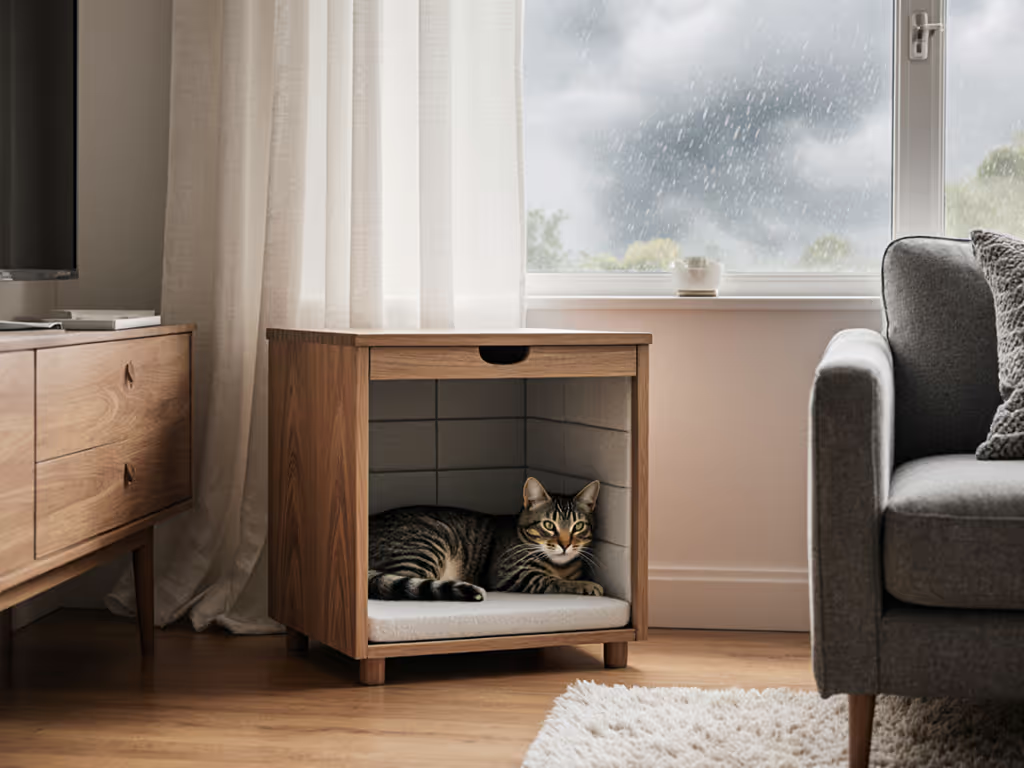
Cat Furniture Harmony: Introduce Cats Successfully
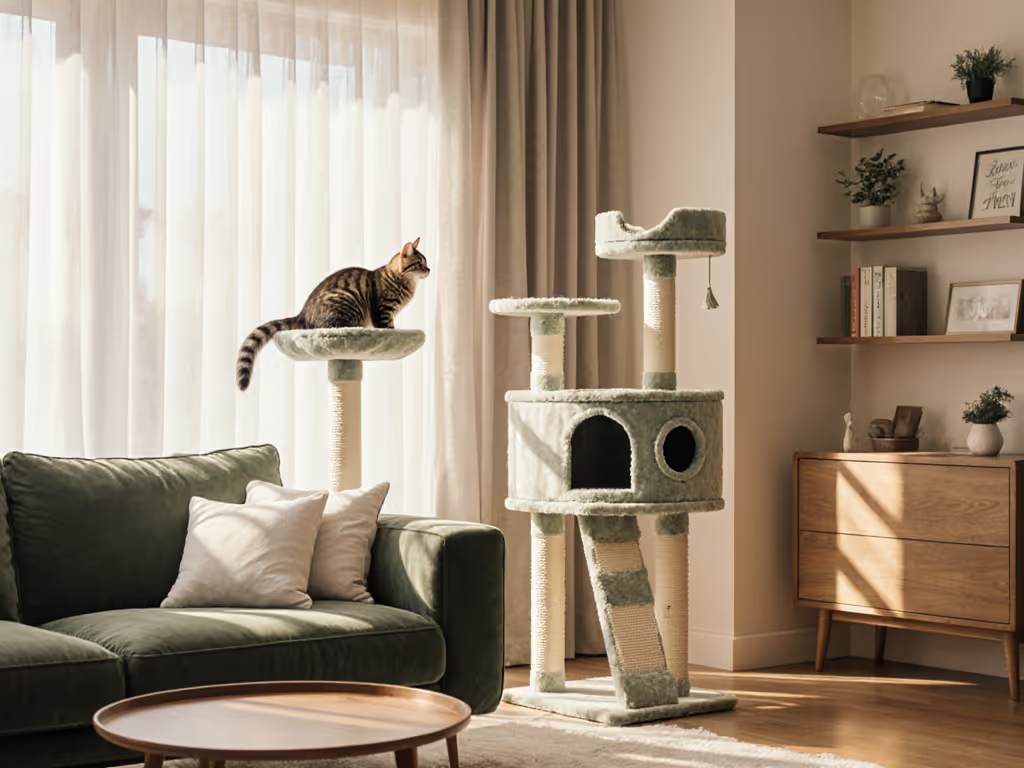
Watching your cat ignore that beautiful new cat furniture can feel like designing a room only to have it rejected by its most important occupant. But when you approach how to introduce cats to new furniture with thoughtful spatial planning, you create opportunities for your feline to embrace pieces that enhance both their instincts and your aesthetic. Properly integrated cat furniture becomes a natural extension of your living space rather than a compromise. Let the room do some of the work.
As someone who once transformed sun-dappled chaos into intentional cat pathways using reclaimed wood, I know the frustration of mismatched gear interrupting clean lines. Beautiful rooms and cat needs aren't opposites; they're co-authors of your shared space. When you focus on feline furniture acclimation through design-aware placement and instinctive cues, your cat will claim their new territory with confidence.
1. Strategic Placement for Immediate Acceptance
Consider your cat's natural movement patterns before installation. Cats instinctively seek elevated vantage points near social hubs, not isolated corners. Position the first perch within 3-4 feet of existing furniture they already use, creating a logical path upward. For a cat shelf, maintain 12-18 inches of vertical spacing between levels to accommodate comfortable jumps while ensuring horizontal clearance of 12-16 inches.
I've seen clients transform neglected corners by anchoring a curved wall shelf (like the Lotus Branch design) above their reading chair, combining their relaxation zone with the cat's desire to oversee household activity. This spatial relationship satisfies both your need for tidy surfaces and your cat's need for observation points.
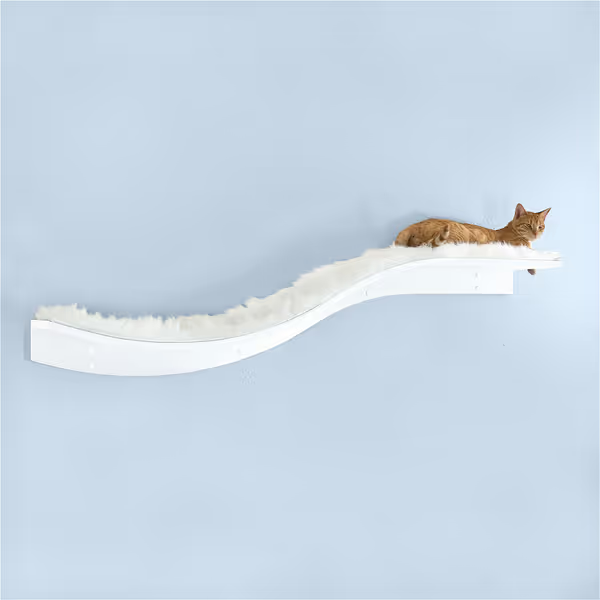
THE REFINED FELINE 60 Inch Lotus Branch Cat Shelf
2. Material Integration That Respects Your Palette
Your cat's new furniture shouldn't scream "pet product." Match textures to existing elements: woven sisal complements jute rugs, matte metal frames echo drawer pulls, and neutral carpet tones blend with your sofa. This color-aware approach prevents visual competition while addressing scratching instincts.
When introducing a multi-level piece, consider carpet color psychology. Lighter shades feel more inviting for shy cats, while bold hues attract confident climbers. For true harmony, select replaceable components (like velcro-attached pads) that allow seasonal updates without replacing entire structures.
3. The Gradual Acclimation Timeline
Skip the "set it and forget it" approach. Instead, implement a phased introduction:
- Days 1-2: Position furniture partially assembled (e.g., shelves laid flat on floor)
- Days 3-5: Mount lowest element only, placing familiar toys and treats on it
- Days 6-10: Add subsequent levels as your cat demonstrates comfort with current height
This measured process respects your cat's processing time while building positive associations. Remember that shy cats may need 3-4 weeks to fully engage, while confident climbers might claim heights within days. For a step-by-step plan, follow our stress-free acclimation guide.
4. Strategic Scent Transfer Techniques
Cats navigate primarily through scent. Before installation, rub fabric from their favorite blanket along perch edges and scratch surfaces. Place a worn t-shirt near the base during the first week, your scent transforms the unfamiliar into comforting territory.
For multi-cat households, rotate individual scent cloths between levels. This establishes clear territory markers within the shared structure, reducing potential conflicts over prime perching spots.
5. Environmental Anchoring for Stability
Cats assess stability through subtle vibrations. Secure all wall-mounted elements directly into studs (not drywall anchors alone), then place a small potted plant or decorative object beneath the lowest shelf. This visual anchor creates a psychological sense of stability, they'll perceive the entire composition as intentional architecture rather than precarious furniture.
When helping cats adjust to cat tree structures, position floor-based bases against walls rather than in room centers. The physical connection to solid architecture provides confidence during initial exploration.
6. Integrated Lighting for Natural Attraction
Cats gravitate toward sunbeams and gentle light pools. Position perches where morning or afternoon light naturally falls for 2-3 hours daily. For north-facing rooms, add a small directional LED (3000K temperature) beneath shelves to create warm landing zones.
This technique works exceptionally well with window perches, position them where light creates defined rectangles your cat can occupy. The combination of warmth and visibility triggers instinctive "safe spot" recognition.
Form meets instinct: pieces that uplift rooms and enrich routines.
7. Progressive Engagement Through Treat Placement
Make exploration rewarding with strategic treat placement:
- Week 1: Place high-value treats only on the lowest level
- Week 2: Position one treat on the middle shelf, keeping others below
- Week 3: Reward summit achievements with interactive play sessions
Avoid scattering treats across all levels immediately, this overwhelms cautious cats. Instead, create a logical progression that builds confidence through achievable challenges. Use puzzle feeders on upper platforms to maintain ongoing interest after initial acclimation.
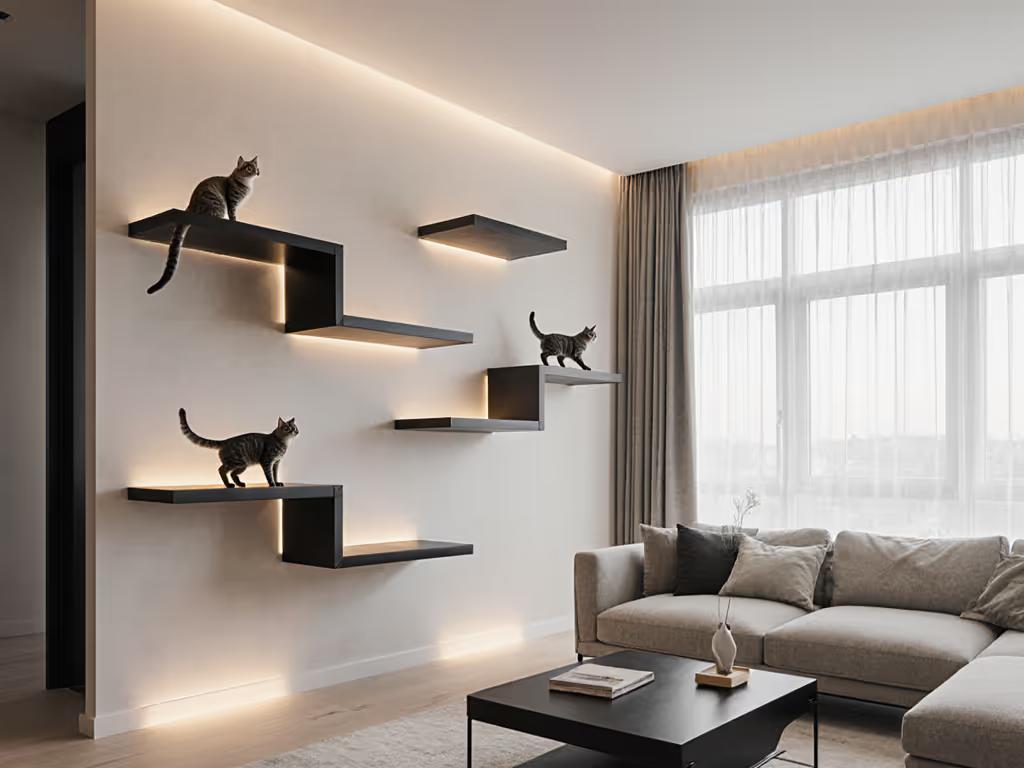
Putting It All Together
Successful cat furniture integration happens when you design with dual perspectives (yours for aesthetics, theirs for instinct). By implementing these spatial strategies, you transform potential eyesores into conversation pieces that serve both your design goals and your cat's needs.
Start today by observing your cat's current favorite resting spots. Note the distance from social areas, height preferences, and preferred surfaces. Tomorrow, sketch one simple modification (perhaps a 12-inch elevation of their existing bed with a matching textile) that bridges current habits with your new furniture. This small adjustment creates immediate continuity while preparing them for more significant changes.
When your design choices honor both your aesthetic standards and feline instincts, you create homes where every element (from the coffee table to the cat shelf) works in concert. Your space becomes a true reflection of your shared life, not a battleground of competing needs.
Related Articles

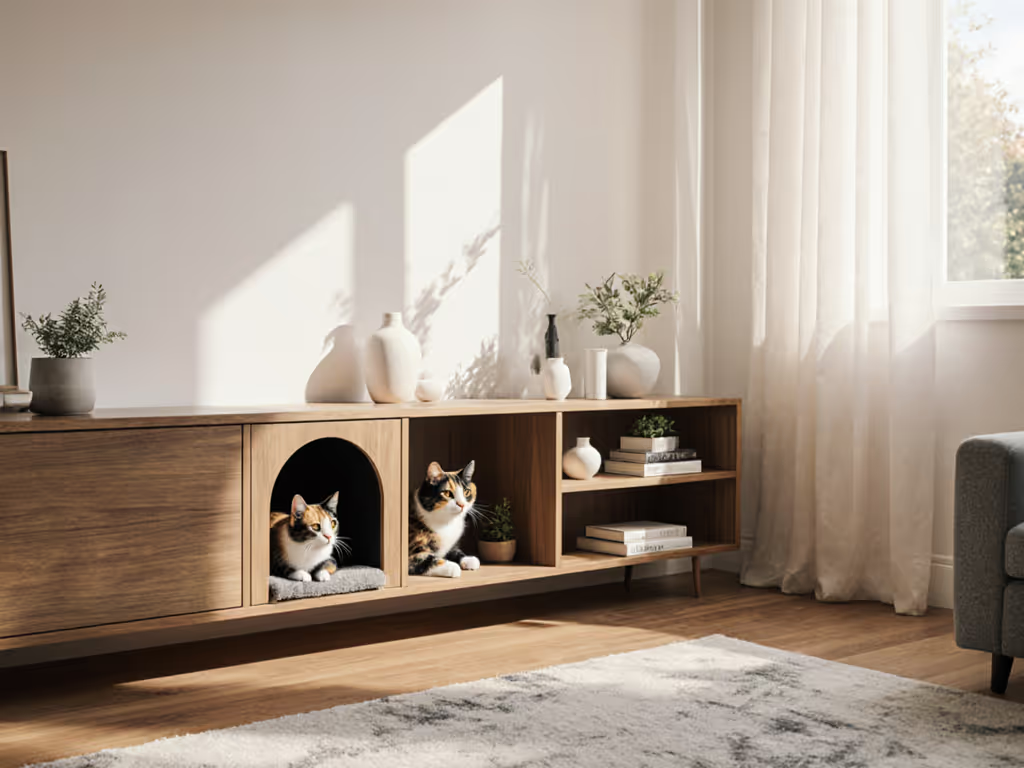
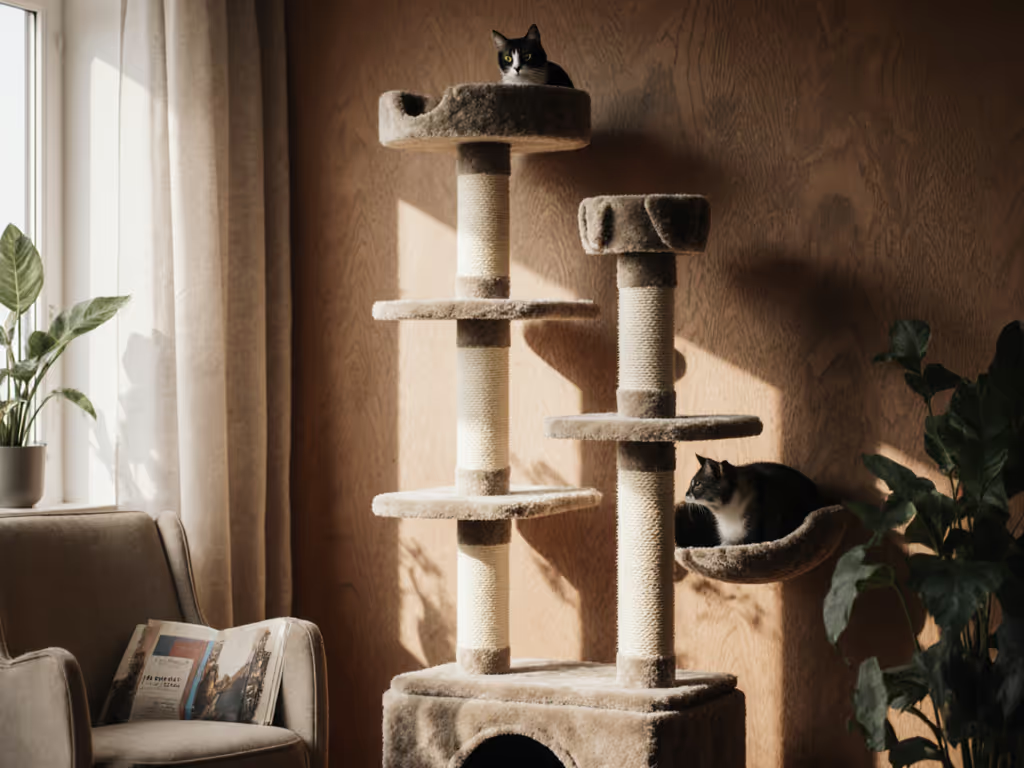
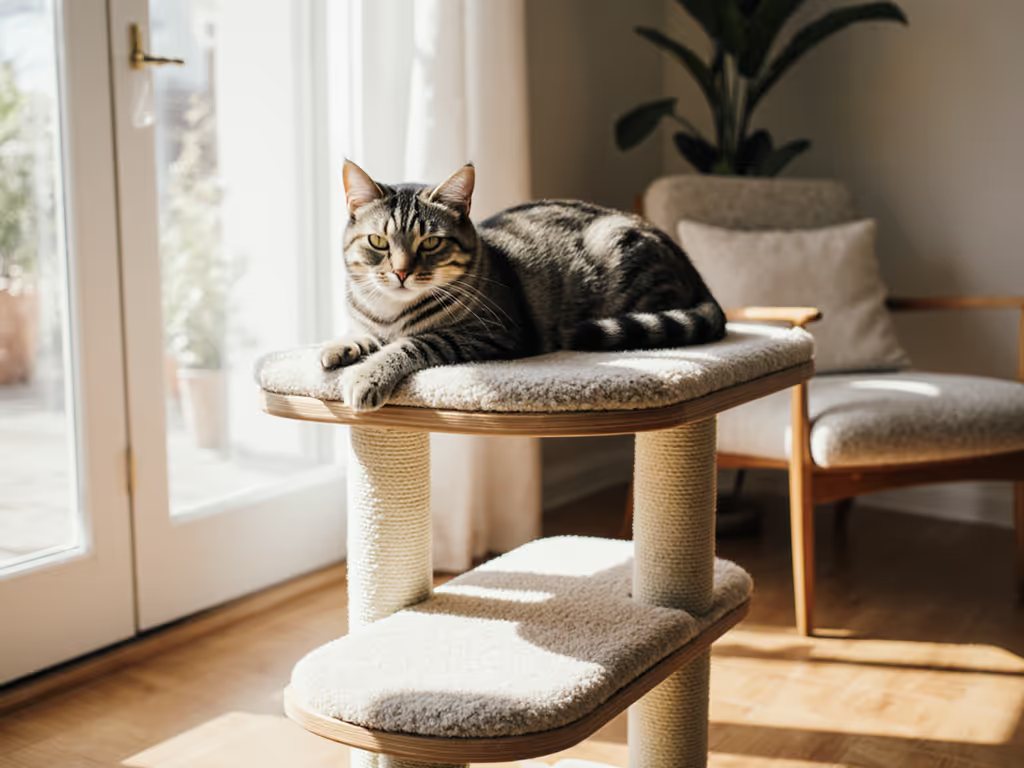
Small Cat Furniture for Senior Cats: Arthritis Comfort Solutions
Build a compact, arthritis-friendly territory that lets older cats climb, rest, and observe without painful jumps. Get practical guidance on staggered shelves and ramps, non-slip surfaces, optional heat, a gentle three-step transition, and common mistakes to avoid.
